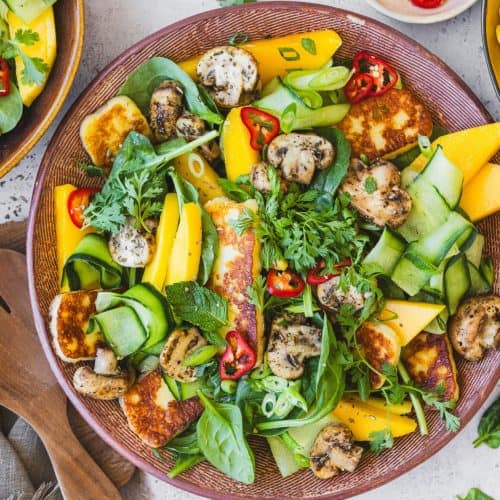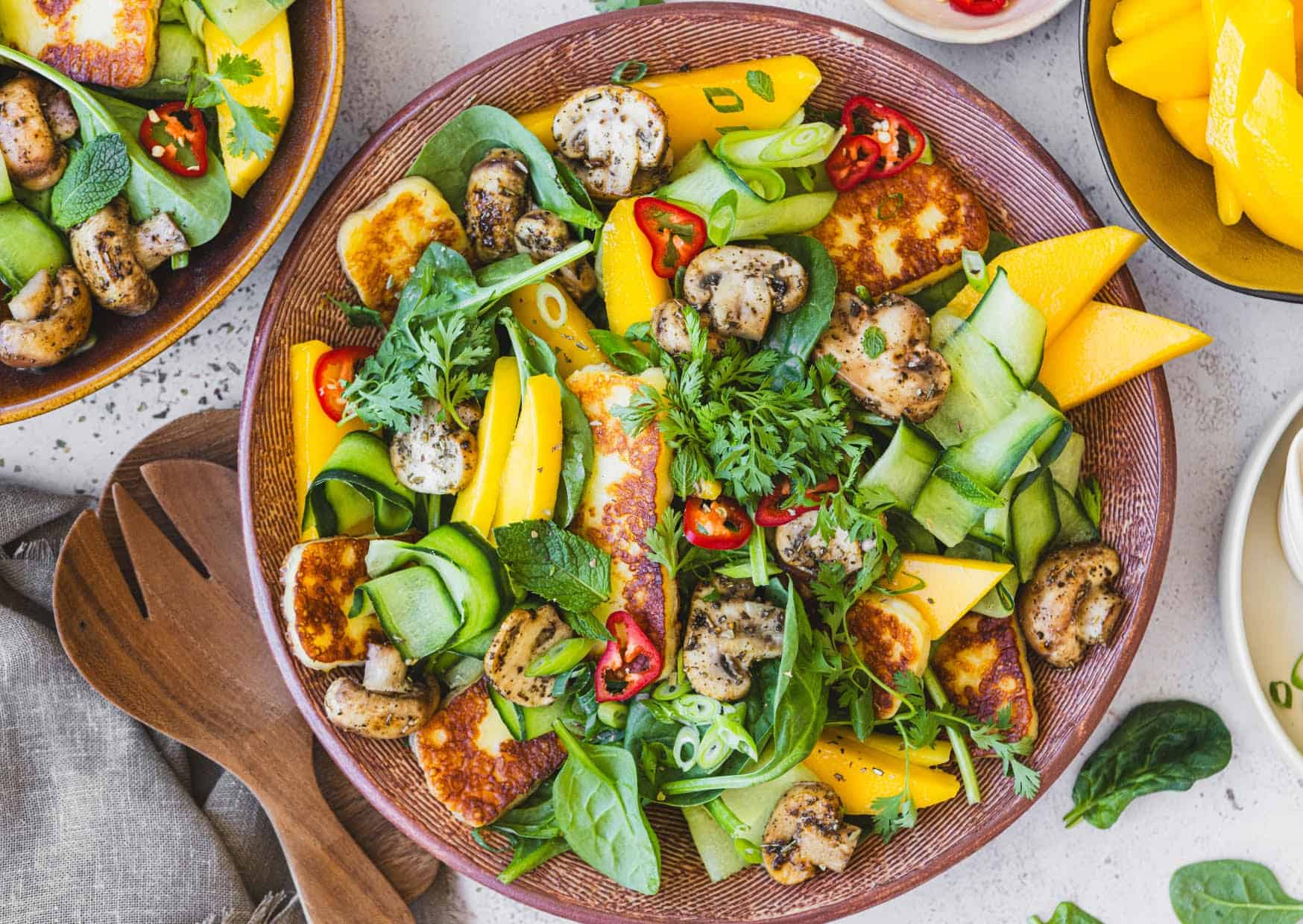An unexpected complete protein!
Here’s a heads up for ordinary people like us….. Protein isn’t the sole preserve of gym bros!
From quickly developing children to moms, dads and grandmas determined to retain muscle mass for better mobility and longevity, protein is a nutritional macro doing a lot of heavy lifting.
Protein is vital for overall healthy function of the human body, from growth and maintenance of tissue, through aiding necessary chemical reactions including hormone production and information transmission between cells, to fostering fluid balance.
It’s a true MVP*! And are you even aware that “antibodies are proteins in your blood that help protect your body from harmful invaders like bacteria and viruses,” asks Healthline.
“Without these antibodies, bacteria and viruses would be free to multiply and overwhelm your body with the disease they cause.”
There’s clearly so much more to protein intake than bulging biceps and internet selfies! We say gratefully!
Fresh mushrooms are what is called a complete protein
We all need protein to thrive, and it turns out that fresh mushrooms are what is called a complete protein, containing all nine of the essential amino acids that humans have to take in from food to create protein in the body.
The human body, in fact, synthesises protein from 20 amino acids, but is able to produce the other 11 needed, which are termed non-essential amino acids.
“Protein is a body tissue made up of amino acids,” explains the medically reviewed website, WebMD. “When amino acids connect to make a chain, they form proteins. If you think of it as a necklace, amino acids are the beads, while proteins are the completed necklace.
“Like the colours in a necklace pattern, amino acids line up in a certain order. These sequences form a specific protein. There are thousands of different proteins with different jobs, such as creating energy or building muscle.”
Plant-based sources of protein as valuable as animal-based sources
Plant-based sources of protein are acknowledged to be as valuable as animal-based sources, with a 2024 study in Science Direct stating that “besides providing several health benefits, plant-derived proteins generally have lower levels of saturated fatty acids and higher amounts of fibre, vitamins, and minerals.”
The research also indicates that “plant-based diets can reduce the risk of chronic illnesses such as heart disease, diabetes, and certain cancers. Moreover, compared to meat, plant-derived protein sources offer greater environmental sustainability.”
Mushroom Protein; a Novel Protein Alternative
Mushroom proteins are future high-quality protein substitutes that are easily accessible to both wealthy and underprivileged populations,” agrees a 2022 Thai study titled: Nutritional Quality and Biological Application of Mushroom Protein as a Novel Protein Alternative.
It goes on to say: “Mushroom-based proteins can be used to combat food insecurity and malnutrition, as a meat substitute, as pharmaceutical agents, and as substrates to stimulate the gut microbiota to enhance human health.”
Professor Christopher Gardner of Stanford University has for two decades investigated “the potential health benefits of various dietary components or food patterns,” focussing on protein intake for the past few years. Based on his findings, he has begun advocating for a “protein flip” when it comes to everyday eating – putting plant-based proteins centre stage instead of meat, chicken and fish.
Prof Gardner is a great champion of using mushrooms as a meat substitute due to their firm texture and moreish umami richness, and also thinks mushrooms are brilliant for topping up protein in dishes with more than one source of protein – so steak with a mushroom sauce, chicken and mushroom pies, or pizza with peppers and mushrooms.
Now whether you prioritise plants high in protein like soy, beans and lentils, or still prefer to focus on bredie and braai chops, mushrooms can raise your protein intake at any meal, as white button mushrooms boast 3,1g of protein per 100g.
Mushrooms are friends with added benefits
Low-calorie mushrooms also have the benefit of bringing vitamins, minerals, antioxidants and fibre to the plate. The fibre especially fuels the microbiome in the right way, helping to improve immunity and aiding overall digest, including better digestion of your other protein favourites.
In addition, mushrooms have a stealthy superpower, especially useful when you are trying to get more protein into the diets of picky kids and ailing adults – they can be blitzed very small and combined with other proteins like mince in equal parts for a big bump-up in flavour and nutrition.
It means you can make your toddlers, teens and more mature members of the family happier more often with mushroom-blended dishes like Beef, Bean & Mushroom Sliders with Homemade Tomato Sauce https://rebrand.ly/f8ceff. Win-win!
Also be sure to visit https://bit.ly/31Tza3V for a myriad delightful ways to pack mushroom proteins into mealtimes! There’s loads of delectable inspiration to help answer the daily plea of “What’s for dinner?”
MVP* = In the sport world it is the most valuable player in sport and in the product world it is a product with enough features to attract early-adopter customers and validate a product idea.

Mushroom, Mango & Halloumi Salad – THE STEALTHY SUPERPOWER OF MUSHROOMS
Ingredients
Vinaigrette:
- 3 tbsp olive oil
- 2 tbsp apple cider vinegar
- 1 tsp honey
- 1 tbsp Dijon mustart
- salt and pepper to taste
Salad:
- 250g white button mushrooms sliced
- 1 clove galic lightly crushed
- 1 fresh red chilli sliced (something mild like a serrano)
- 1 tsp mized dried herbs
- 250g packaged block of halloumi cheese most brands range between 250g-300g
- 1 small Mediterranean cucumber sliced into ribbons using a peeler
- 1 large ripe mango peeled and sliced
- 80g baby spinach
- 2 spring onions sliced
- handul fresh mint leaves
- olive oil for cooking
- salt and pepper to taste
Instructions
For the vinaigrette:
- Place all the ingredients together in a little jar with a lid.
- Season well with salt and pepper
- Shake thoroughly until emulsified and keep in the fridge until serving.
For the salad:
- Prep all raw ingredients ahead of time so you can serve the mushrooms and halloumi straight out of the pan
- Heat a large frying pan on medium-high heat.
- Add a drizzle of olive oil and pan fry the mushrooms, with the smashed garlic clove until golden.
- Add the chilli and sauté for a minute until fragrant.
- Season well with salt, pepper and dried herbs.
- Remove from the pan and set aside, discarding the crushed garlic clove.
- Wipe out the pan with paper towel.
- Place the pan on medium heat.
- Add slices of halloumi in a single layer making sure they have full contact with the pan.
- Pan fry on both sides until golden brown and crisp.
Assemble the Salad:
- Assemble the salad layering the fresh ingredients and cooked mushrooms and halloumi.
- Shake the dressing again before drizzling over the salad.

